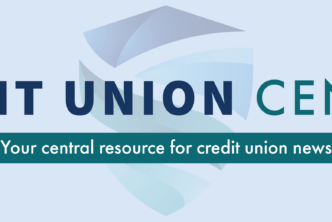By Jeff Rendel
Certified Speaking Professional
We’ve all been there: The strategic planning session that opened with the intent of staying at the highest levels of conversation and found itself in the weeds the moment the discussion swung to marketing, branch locations, Millennials, and the list goes on. While it is important to include these and other issues in strategic meetings, maintaining the focus on “what” needs to be accomplished versus “how” it will be achieved is significant.
A board is tasked with balancing risk and return; ensuring members’ needs are met; and, providing strategic guidance to the CEO. Often, the level of detail in board conversations correlates with the life cycle of a credit union or a line of business. For a credit union just getting started (a few charters are approved each year), its board would be fairly involved in operational discussions as the credit union acquires members, generates revenue, and builds capital. Since most credit unions are mature and established in the industry, a board’s dialog might focus around new lines of business, different markets to serve or increased concentration in a grouping of loans.
If a conversation with your board feels like it’s getting too operational, redirect the discussion back to strategy. Staying mired in the details can create an unneeded setting that lessens the value provided from the board and CEO. Below are some phrases to help steer the conversation back on course.
- “Let’s establish and focus on our general objective.” How to market to potential members near a new branch can get very meticulous very quickly if left unchecked. Where a yearly marketing plan was once the norm; marketing is now very flexible and fluctuating with the use of analytics, business intelligence, and digital outreach. In this case, the general objective is to increase membership tied to a new branch. This pivot back to the overall objective keeps a board focused on the real reason for a new branch (adding and serving members), rather than the hands-on methods of accomplishing the goal.
- “Are we taking too much risk? Are we being too conservative?” Entering a new line of business (commercial lending), a vastly different market (metropolitan area hundreds of miles from your established footprint) or increasing concentration in a product that caused losses in the past (high loan-to-value residential lending) can cause much concern for a board. While a board might agree that the new direction is necessary, uncertainty is common. A board may need to examine several scenarios to understand different outcomes. A board may ask for more attentiveness during execution, or it may perceive well-managed risk allows for greater than planned growth and business development. Regardless, it’s imperative to clarify your board’s comfort with new risks.
- “What gauges of progress are most beneficial?” In most cases, boards just need to see signs of progress, especially with new ventures or adjustments in current business plans. In the examples above, a board may want to receive updates on new members from new branches; net yield from commercial lending; market awareness and market share in a new city; and, past real estate delinquency comparisons – all as new or expanded endeavors become more mature as part of your ordinary operations. Providing this kind of information to a board allows it to provisionally be a bit more involved, recognizing that successful results will allow it to focus on new areas of growth and risk to the credit union.
Keeping a strategic meeting’s focus on what must be done, not how it is done, is key to achieving the highest outcomes from all participants. Consider using some of these tools the next time it seems that the conversation feels like an operations update, rather than a discussion about the next phase of growth for your credit union. You will accomplish more at your meeting and ensure that the roles of all parties are best utilized for the benefit of your credit union’s members.
© 2019 by Jeff Rendel. All rights reserved.
Jeff Rendel, Certified Speaking Professional and President of Rising Above Enterprises, works with credit unions that want entrepreneurial results in sales, service, and strategy. Each year, he addresses and facilitates for more than 100 credit unions and their business partners.
Contact: jeff@jeffrendel.com; www.jeffrendel.com; 951.340.3770.






